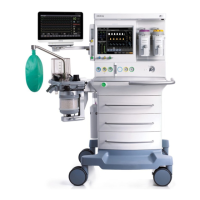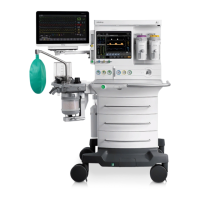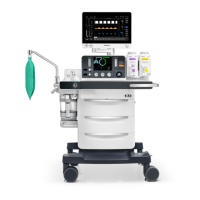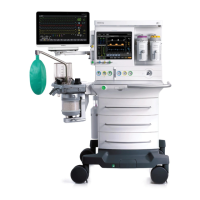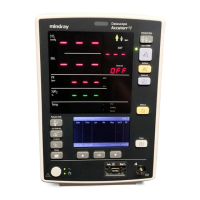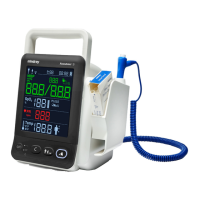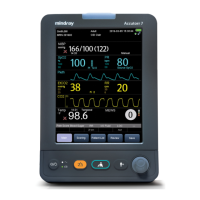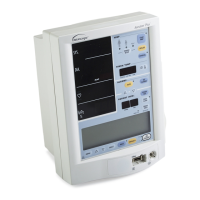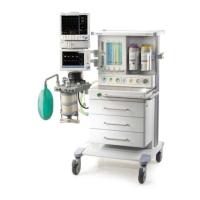6-38
Failure
Description
Possible Cause Recommended Action
2. Replace the PEEP valve.
Display 4
The pressure cannot be controlled
within the range of [maximum pressure
– 20, maximum pressure – 5] cmH2O.
1.
Use the valve diagnosis tool
for diagnosis. (1) Open the
PEEP valve based on 500 mA.
The pressure measured by the
calibration device is greater
than or equal to 100 cmH2O.
(2) Close the PEEP valve and
increase the opening of the
PEEP valve based on a certain
current. The AD values
collected by the Paw sensor
increase gradually.
Recalibration is
recommended if the preceding
conditions are met.
2. Replace the PEEP valve.
Display 5 The maximum valve sealing pressure is
low.
1. Check whether the gas supply
is within the range of 280–600
kPa (40 psi–87 psi) for the
whole calibration process.
2. Use the valve diagnosis tool to
check whether the maximum
output pressure of the PEEP
valve is greater than or equal
to 100 cmH2O. If not, replace
the drive gas assembly.
Display 6
A zero point error occurs in the Paw
sensor.
1. Zero the sensor.
2. Replace the VCM.
Display 7 A zero point error occurs in the PEEP
sensor.
1. Zero the sensor.
2. Replace the VCM.
Display 8
A zero point error occurs in the
esophageal pressure sensor.
1. Zero the sensor.
2. Replace the VCM.
Display A The calibration data of the Paw sensor
does not conform to monotonicity (the
AD value of t
he former calibration
point is greater than that of the latter
calibration point).
1. Check the pipeline connection
and the gas tightness.
2. Check whether the gas supply
pressure ranges from 280 kPa
to 600 kPa (40 psi–87 psi).
3. Perform the calibration again.
4. Replace the VCM.
Display B The calibration data of the PEEP sensor
does not conform to monotonicity (the
AD value of the former calibration
point is greater than that of the latter
calibration point).
1. Check the pipeline connection
and the gas tightness.
2. Check whether the gas supply
pressure ranges from 280 kPa
to 600 kPa (40 psi–87 psi).

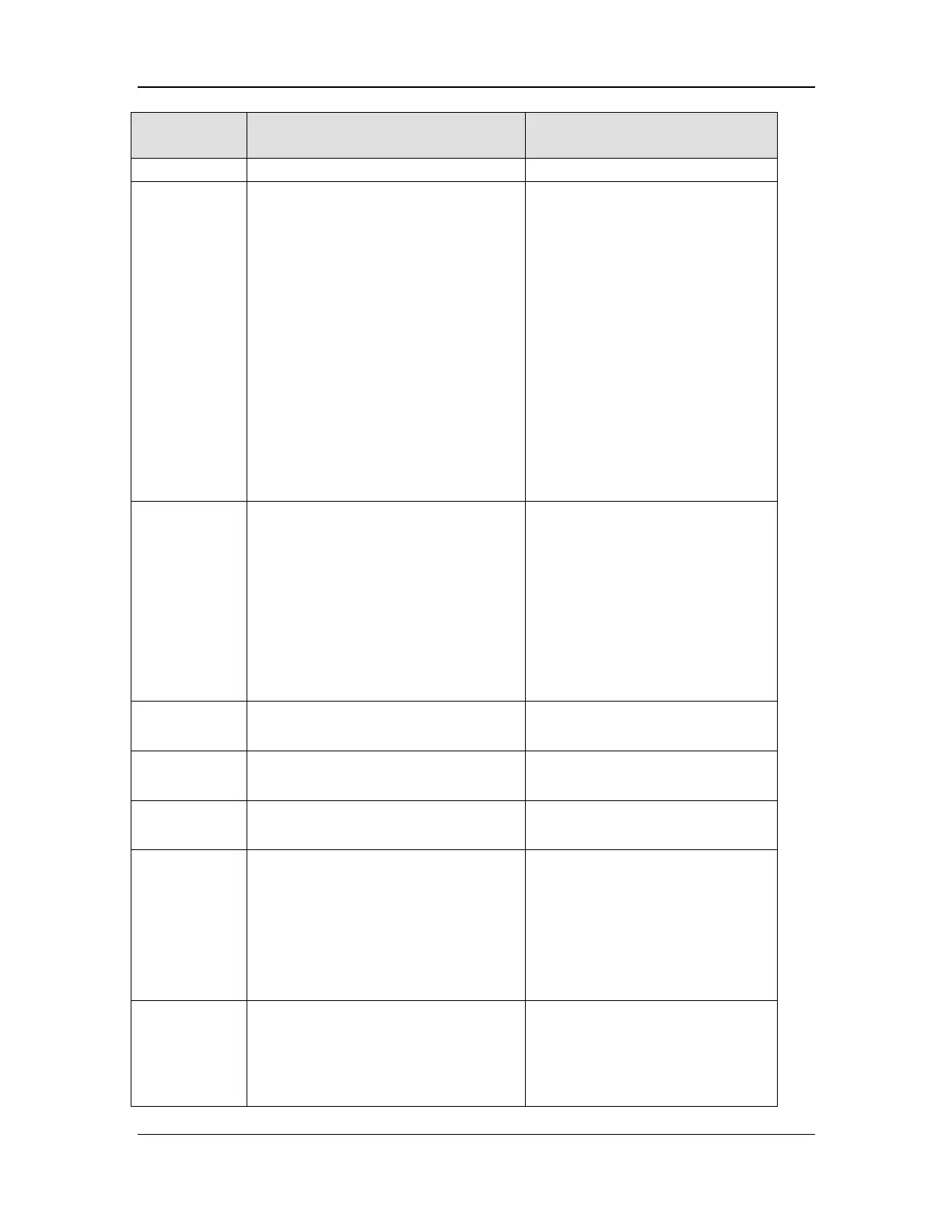